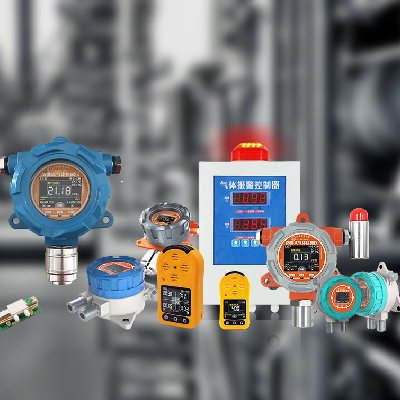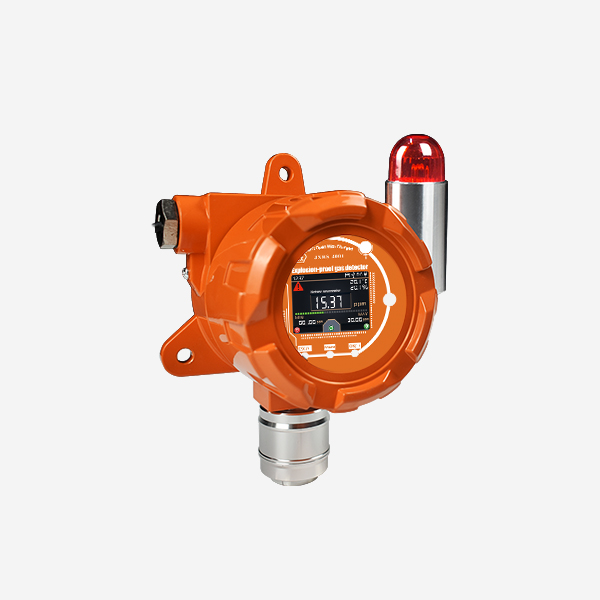Gas detectors are essential safety tools in various industries, protecting workers and the environment from harmful gas leaks. However, technology is constantly evolving, and gas detectors are no exception. Manufacturers are continuously striving to improve these devices with innovative features that enhance safety, efficiency, and user experience. This article explores the exciting new advancements in gas detector technology, highlighting features that are shaping the future of safety.

Enhanced Detection Capabilities
At the core of any gas detector lies its ability to accurately identify and measure gas concentrations. Here’s how advancements are improving detection:
Multi-gas Detection: Traditional detectors often focus on a single gas. New multi-gas detectors can simultaneously detect a wider range of gases, providing a more comprehensive safety net in environments with potential exposure to multiple threats. This eliminates the need for multiple single-gas detectors, simplifying equipment management and reducing costs.
Improved Sensor Technology: Advancements in sensor technology are leading to more reliable and accurate gas detection. New sensors offer faster response times, allowing for quicker identification of gas leaks and enabling preventative action. Additionally, improved sensor selectivity can minimize false alarms triggered by harmless substances.
Advanced Calibration Techniques: Regular calibration ensures the accuracy of gas detectors. New self-calibration features are being developed, reducing reliance on manual calibration procedures and minimizing downtime. Additionally, remote calibration capabilities allow for easier management of detectors in hard-to-reach locations.
Improved Connectivity and Data Management
Modern gas detectors are becoming increasingly connected, offering real-time data and enhanced communication capabilities:
Wireless Connectivity: Many gas detectors now incorporate Wi-Fi, Bluetooth, or cellular connectivity, enabling real-time data transmission to centralized monitoring systems. This allows for remote monitoring of gas levels, facilitating quicker response times in case of emergencies.
Cloud-Based Data Management: Data collected by gas detectors can be uploaded to cloud platforms, providing valuable insights into gas exposure patterns and trends. This data can be used to identify areas with higher risk and improve overall safety protocols.
Automated Alerts and Notifications: Connected gas detectors can be programmed to send automated alerts via SMS, email, or mobile app notifications when gas levels exceed predetermined thresholds. This ensures timely communication and facilitates a quicker response to potential threats.

User-Friendly Features for Improved Safety
While advanced technology is crucial, user-friendliness is equally important for ensuring proper gas detector usage:
Intuitive User Interface: Clear and easy-to-understand displays with real-time gas readings, alarm status indicators, and battery levels are essential features. Additionally, multilingual interfaces can cater to a diverse workforce.
Audio-Visual Alarms: Effective alarm systems are critical for alerting personnel to potential gas leaks. New detectors feature loud and distinctive audible alarms coupled with bright flashing lights, ensuring alerts are noticed even in noisy environments.
Data Logging and Reporting Features: The ability to log gas readings and generate reports allows for comprehensive safety documentation and analysis. This data can be used for training purposes, identifying trends, and improving overall safety procedures.
Advanced Features Shaping the Future
The future of gas detector technology promises even more groundbreaking advancements:
Artificial Intelligence (AI): AI integration can revolutionize gas detection by analyzing sensor data and identifying potential hazards before they escalate. AI algorithms can learn from past events and predict gas leaks based on historical data and real-time environmental conditions.
Internet of Things (IoT) Integration: Gas detectors can be seamlessly integrated with other IoT devices within a facility, creating a connected safety ecosystem. This allows for data sharing and automated responses, enabling a more proactive approach to safety management.
Advanced Wearable Detectors: Wearable gas detectors are becoming increasingly popular, offering continuous personal monitoring for workers in high-risk environments. These devices can be integrated with smartwatches or other wearable technology, providing real-time data and ensuring worker safety.
Conclusion: The Evolving Landscape of Gas Detector Technology
The advancements discussed above paint a promising picture for the future of gas detection. By incorporating improved detection capabilities, enhanced connectivity, user-friendly features, and cutting-edge technologies like AI and IoT, gas detectors are poised to become even more effective in protecting lives and preventing environmental damage. As technology continues to evolve, we can expect even more innovative features that redefine safety standards and revolutionize the way we approach gas detection in various industries.